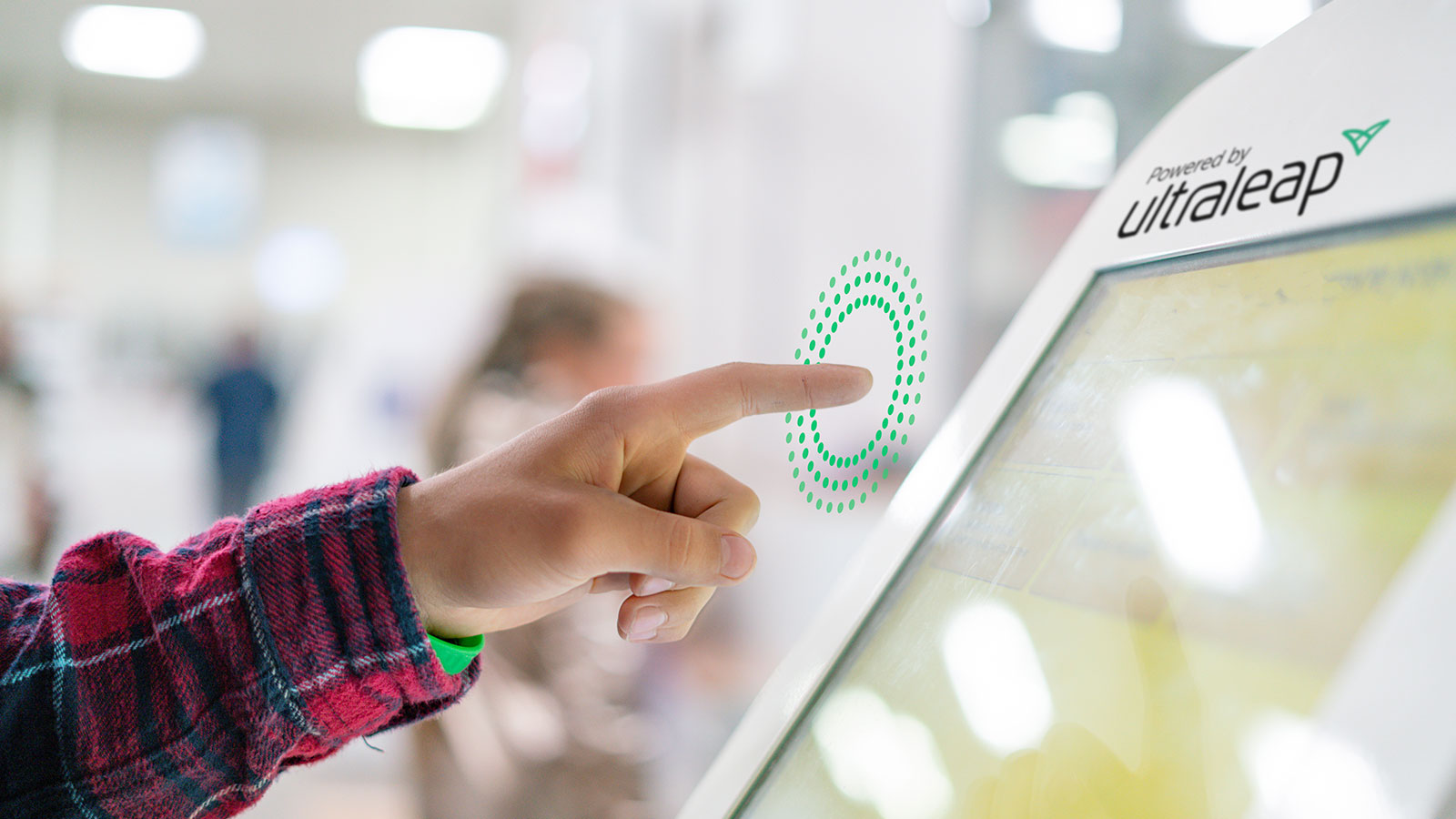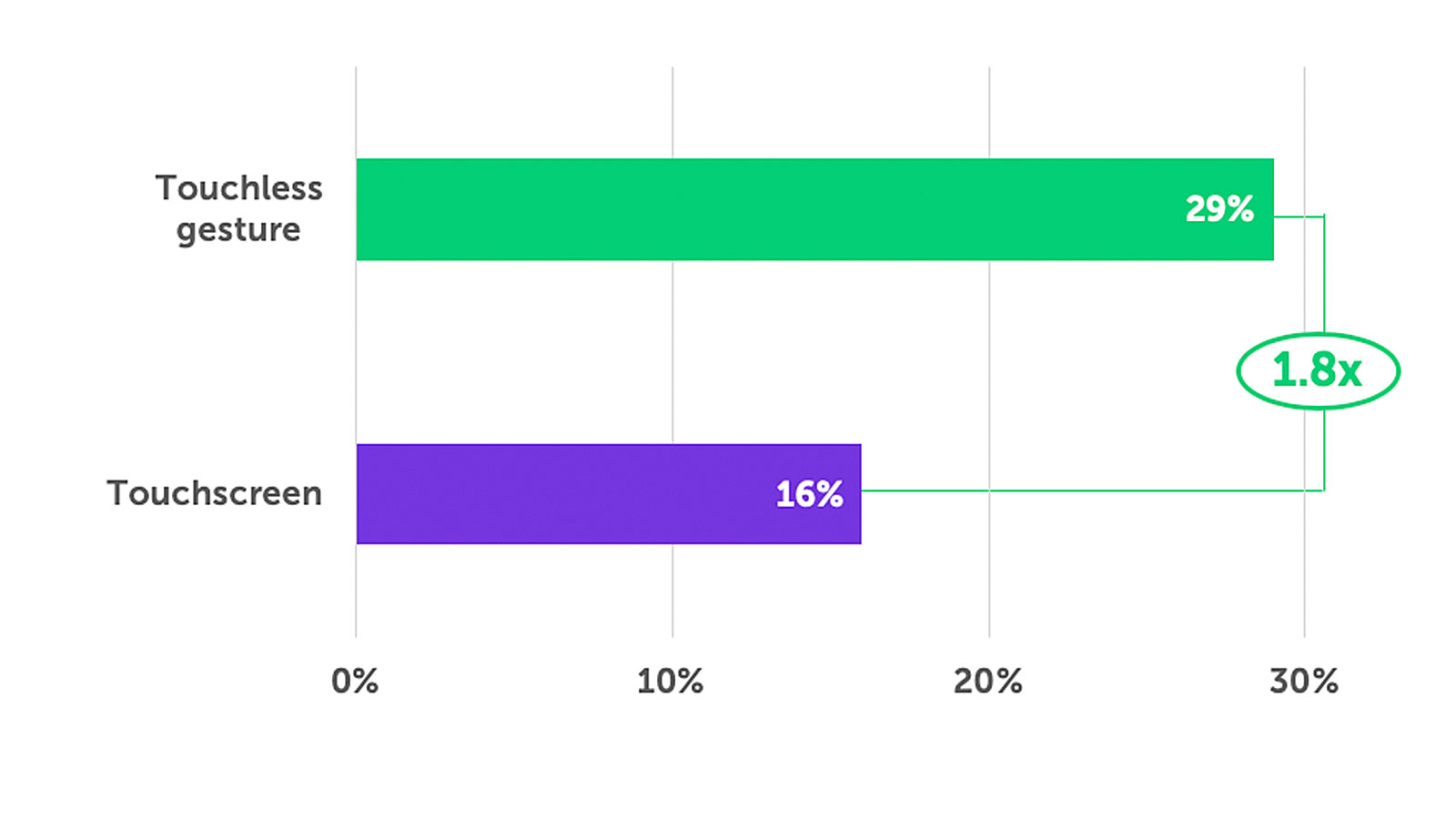
The End of the Touchscreen Era
Posted; May 27, 2020
Research shows touchscreens have lost consumers’ confidence as the world begins to re-open after lockdown
27th May 2020 – Consumers on both sides of the Atlantic have raised concerns about touching public screens at self-service, supermarket checkouts, in health centres and at public transport ticketing kiosks as they look forward to a world post-lockdown.
Research by natural user interface company, Ultraleap, in late April and early May, found that among 538 respondents split almost 50:50 between the United States (267) and the United Kingdom (271), just 12% (14% in the US vs 9% in the UK) believed that touchscreens in public spaces are hygienic, while more than 82% on average (79% in the US and 85% in the UK) were confident that touchless interfaces would be more hygienic and give them better protection.

“Touchless gesture-based interfaces are clearly preferred as a future option over touchscreens, counter service, or mobile apps,” said Steve Cliffe, president and CEO of Ultraleap. “With consumers stating that the number one drawback of public touchscreens is that they are unhygienic and that the single greatest benefit of “contactless” is that it’s touch-free, we believe gesture control technologies will play a significant role in restoring consumer confidence in retail and other public environments in a post-COVID-19 world.”
Consumers in the UK (71%) and the US (74%) said they expected to interact with touchless technologies, such as gesture interfaces, in the future. In restaurants, would-be diners on both sides of the Atlantic said they would prefer touchless gesture ordering (US 33% / UK 35%) to making orders across a counter (US 27% / UK 24%), mobile apps (US 22% / UK 21%), with public touchscreens the least preferred (US 18% / UK 20%).
In a 2016 study published in the American Journal of Infection Control, 100% of the 17 public grocery store touchscreens tested were found to have bacterial colonies on them and 59% were found to have dangerous bacteria, such as e-coli. Of the 17 hospital-based touchscreens tested, all of them also had bacterial colonies. In the UK, a 2009 study of London’s public transport network and a public space in a hospital showed that more than 60% of touch surfaces had high levels of bacterial contamination.

“When the average supermarket check-out touchscreen is used as often as 350 times a day by different consumers, it is not hard to understand how easy it is for the screen to become contaminated and also just how difficult it is to find time slots to properly clean them and to keep them sanitised,” said Saurabh Gupta, Director of Out-of-Home Product at Ultraleap.
– ENDS –
About Ultraleap
Ultraleap is the new single brand formed after Leap Motion joined Ultrahaptics in 2019. The combination of the two leaders and a strong portfolio of research-based IP are now focused on facilitating engaging, natural, 3D (spatial) interaction between people and technology. This fast-growth company employs more than 150 people across UK, US and Asia. It has become the first to offer the full vertical stack of software and hardware to enable immersive virtual touch controls for the automotive, advertising, industrial, immersive entertainment and enterprise sectors.
More information: (Interviews, photos and videos available on request)
Sources
C.P. Gerba et al “Bacterial contamination of computer touch screens” Journal: American Journal of Infection Control. 2016.
J.A. Otter & G.L. French “Bacterial contamination on touch surfaces in the public transport system and in public areas of a hospital in London” Journal: Letters in Applied Microbiology. 2009
T. Antczak & R. Weron “Point of Sale (POS) Data from a Supermarket: Transactions and Cashier Operations” Journal: Data. 2019
Notes on Methodology
538 participants recruited through SurveyMonkey in the US and UK. The survey had two sections one answering questions about touchscreens and the same questions after about Ultraleap. The survey progressed from open-ended unprompted questions to more directed questions finally providing a specific scenario. There was a range of types of questions to elicit quantitative comparisons for stats and open-ended questions to uncover attitudes and further insights. Importantly, at the start of each section, participants were asked to watch a video (either a touchscreen or Ultraleap). They were asked to describe what was going on in the video and then specifically answered the question wrong or each condition was removed from the data analysis so we were confident that the conditions were understood.